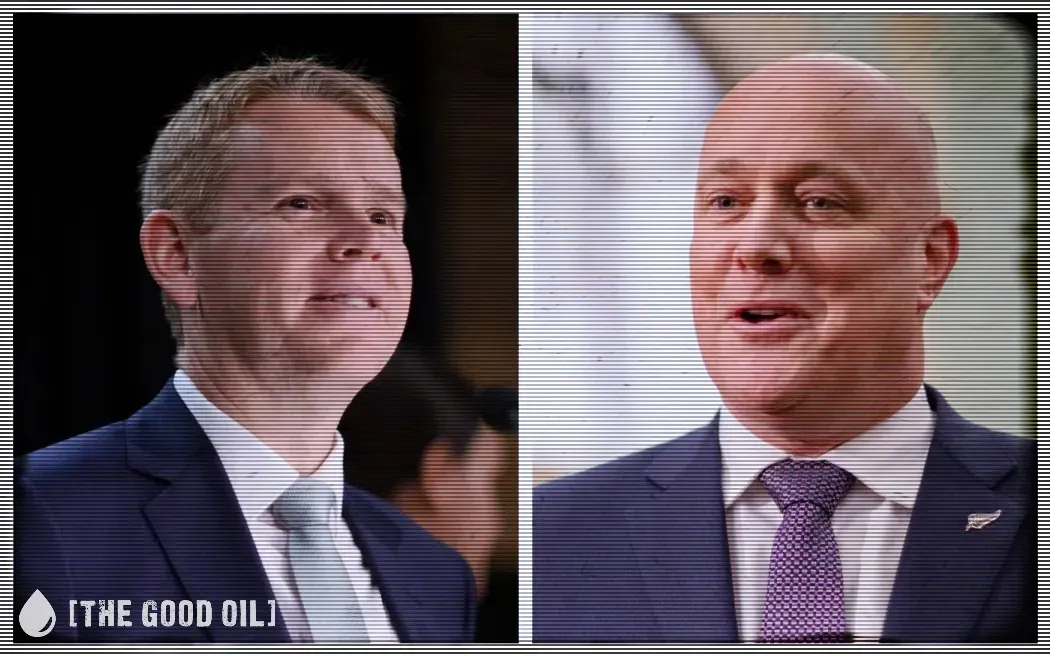By James Davidson
Many of us have heard of the ball waxing controversy currently occurring in Canada. It illustrates the unintended consequence of adding gender identity and gender expression as protected categories to the human rights code. Something that Andrew Little is looking into.
Apart from being a case study of how kindness without caution can backfire on the society the government is trying to help, the Jessica Yaniv saga is an intriguing story of government and societal corruption, unintended consequences the left was unwilling to consider and the outcome of cotton wooled children in an age of easy access from adults.
To fully understand this story, we must first understand Jessica Yaniv.
Jessica isn’t any ordinary transgender woman. She has shown herself to be a particular breed of person crossed between a self victimising predator, and a sewer-dwelling bridge troll… to put it mildly.
With the obvious fake hair, and the physique unable to fit through a doorway, Jessica Yaniv might just as well be Subway’s next brand ambassador. If you’re confused by my comparison, it should become clear as we look through her case in this three-part series.
For anyone who has not heard about the happenings in Canada, our story begins with two testicles, a penis, and 16 unsuspecting women.
Having a Brazilian wax is what some women like to do. Feeling like a woman herself, Jessica decided to get one. Not wanting to go to a store directly, she decided to message local waxers found on the Facebook marketplace.
What she ended up finding were 16 women unwilling to perform the service after discovering that Jessica is a male to female transgendered woman. Supposedly becoming upset about this, she decided to take all 16 women to the human rights tribunal.
I say supposedly upset, not because I am attempting to negate a ‘victimised’ minority’s hurt feelings, but because Jessica ended up dropping the first three cases after they obtained lawyers. Turning the matter into less of a genuine quest for justice, and into more of a gay wedding cake situation. (She fits at least three of the criteria: lesbian, minority, in a search for easy money).
The question may arise in your mind, why did these women refuse to give the waxing service to Jessica after finding out that she is transgender? To a left-winger, the answer is obvious. TRANSPHOBIC! HOMOPHOBIC! BIGOT! RACIST!
But thankfully, this is a classical liberal, conservative and right-wing leaning site and I know that you, the reader, would prefer a more sophisticated answer.
There are four reasons why. The first was that some of the women were simply not comfortable handling male genitalia (how transphobic.. I know).
The second reason was that some of the women refused on religious grounds. In the Sikh tradition, a woman is not to touch a man intimately who is not her husband. Unfortunately for Yaniv, the Sikh religion has not become ‘woke’, and thus has the opinion of ranking biology over self-determined identity status when it comes to gender classification.
The third reason was due to safety concerns. One of these women, Marcia De Silva, was operating her business out of her home where her children would be in the next room. After discussion with her husband, they decided it would be a safety concern to let this particular transgendered woman into their home for a waxing treatment, especially after Jessica had allegedly harassed her business online.
Finally, the fourth reason. Many of these women have a lack of technical knowledge regarding how to handle and properly wax male genitalia.
The cause of Jessica’s ability to take these women to the human rights tribunal is due to the law change that resulted in Jordan Peterson’s rise to fame, Bill C-16. This bill made gender identity and gender expression protected categories from discrimination under the human rights code.
According to Jessica, because these women refused to touch her male genitals, it is a violation of her right to not be discriminated against based on her gender identity.
If she declares herself to be a woman, then any service given to women must be applied to all who identify with the term, according to her.
And in fact, the preliminary hearing agreed with Jessica’s analysis, saying transgendered people have a right to “gender affirming care”.
However, the final ruling will be delivered within the next 3 months, expected to be in October.
There are three courts above the tribunal, and it is likely that whatever direction the tribunal chooses to go, an appeal will most likely occur, and possibly again after that, according to Canadian lawyer John Carpay who is working on the case.
This ball waxing case raises important questions for our nation. How far should we go to accommodate self-selecting gender identity?
Now, I am a person who is pro-liberty. If a person self identifies as a gender different from what we would assume from their birth genitalia, I am usually willing to go along with their wishes.
However, identity is a two-way street. And it is up to the transgendered person to accommodate this fact of social life into their daily operation. If an interaction, like the one we have seen with Yaniv, goes outside of the boundaries of what would be considered normal of the gender they are assuming, then I would argue that they are acting outside of the ‘identity is a two-way street’ theory. If a person is not willing to participate in a social negotiation appropriately, I see no reason as to why any of us should participate in it either.
But adding gender identity and gender expression as protected categories seems to disagree with my proposal above. Instead of seeing identity as a negotiation, identity becomes a rule of self-selection enforced by the weight of the justice system.

No longer can a Canadian determine someone else’s gender identity by taking into consideration normal characteristics of gender. Instead, they must bow to the whim of the person they are talking to, or about.
This causes issues when male looking individuals who aren’t even trying to appear the opposite gender, such as Jessica Yaniv in the photo below, are at liberty to go into the female bathroom and take photos of themselves that just happen to have many young girls in the background.

Giving people the ability to self enforce their identity also causes issues as gender becomes seen as something not related to characteristics and traits, but instead becomes a category believed by the masses to have no intrinsic meaning. This gives biological men the ability to bash the s\#!&’ out of biological women in the UFC or wrestling because hey, they’re both ‘real women’ right?
As I mentioned before, Andrew Little has expressed interest in adding gender identity to our Human Rights Act as a group that cannot be discriminated against.
The experiment has been run in Canada since 2016. Now we are learning about its results.
No matter what concerns a woman may have, whether it is a religious reason or if you simply feel uncomfortable, as a society we may be putting women into a position where the law forces them to touch male genitalia.
Adding gender identity and gender expression to our Human Rights Act isn’t simply an issue of discrimination. This is an issue of how our government will let us view other people.
This is the first article in a series I will be writing on Jessica Yaniv. In future publications, I will explore the corruption of society and government and the consequences of wrapping our children in cotton wool while allowing easy access from adults. These are two topics exposed throughout the Jessica Yaniv saga. I hope you’ve enjoyed it thus far.









